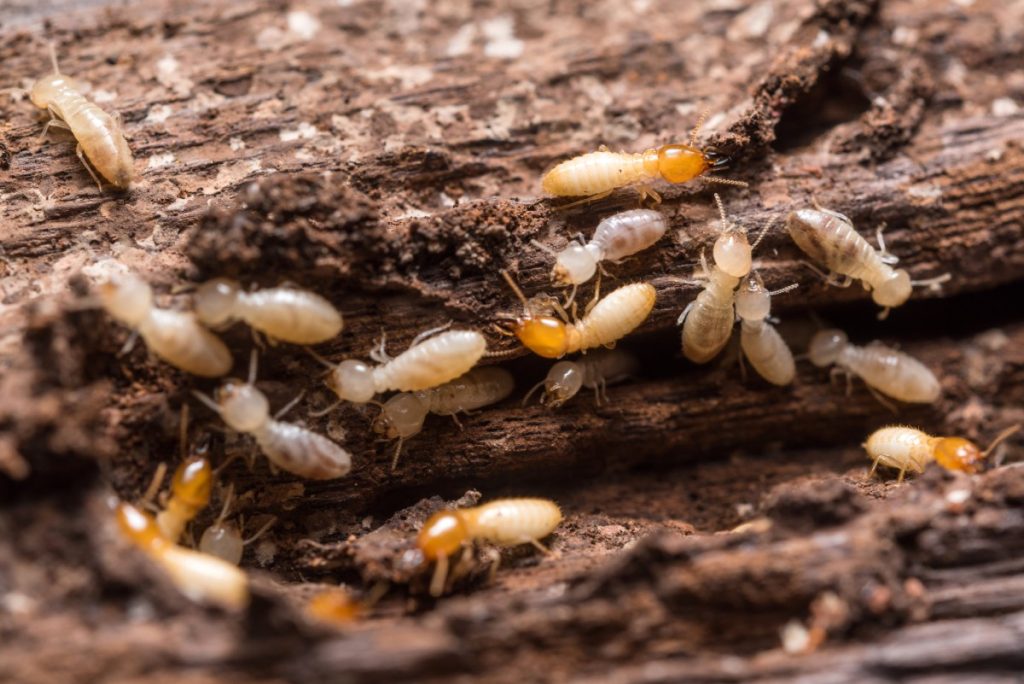Visual Signs of Termite Activity
Typically, termites are small, pale, soft-bodied insects. They can be mistaken for ants, but unlike ants, termites have straight antennae and a uniformly thick waist without any narrowing.
However, termites are good at hiding. They often live hidden away in dark, moist environments, making direct sightings of the insects rare. You can only confirm their presence by noticing the telltale damage they leave behind.
The visual signs of termites include:
- Mud Tubes: Check foundation walls, crawl spaces, and attic beams for mud tubes. Termites build these tunnels to travel safely between their colony and food sources.
- Wood Damage: Look for visible changes in the wood, such as holes, indentations, and wood that sounds hollow when tapped. Wood affected by termites often appears overly dark and may crumble easily under slight pressure.
- Frass: These termite droppings resemble fine sawdust and often accumulate near exit holes in wood. Look for small piles of what look like pellets.
- Discarded Wings: After swarms, termites shed their wings. Finding discarded wings inside or near the house can indicate recent termite activity.

